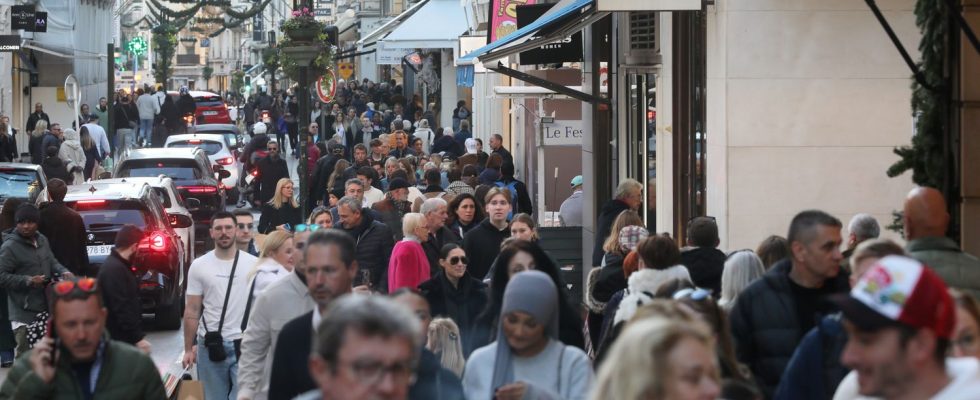Between 2015 and 2021, the population increased by an average of 203,000 inhabitants each year, which represents approximately the population of the municipality of Reims.
Published
Reading time: 2 min

As of January 1, 2021, 67.4 million people lived in France excluding Mayotte (67,408,000 precisely), according to the latest census figures published Thursday December 28 by INSEE and which franceinfo was able to consult. Between 2015 and 2021, the population increased by 0.3% per year on average, or 203,000 additional inhabitants each year, approximately the population of the municipality of Reims, compared to 0.5% per year between 2010 and 2015.
In detail, INSEE notes a “demographic growth twice as high in urban areas as in rural areas” i.e. 0.4% on average per year, compared to 0.2%, according to this census “while it was identical between 2010 and 2015”, at 0.5% per year. In 2021, 45 million people lived in urban areas compared to nearly 22 million people in rural areas. Population growth is 164,640 inhabitants in the urban world and 38,322 in the rural sector. Note also that the rate of population growth decreases between 2015 and 2021 in almost all regions, notes INSEE.
The population is falling in Martinique and Guadeloupe
Between 2015 and 2021, the rate of population growth reaches or exceeds 0.4% per year in nine regions. It is highest in Guyana 1.6%, in Corsica 1%, in Occitanie 0.7%, in Pays-de-la-Loire 0.6%, in Auvergne-Rhône-Alpes and Brittany with 0.5 % each. The regions having experienced the greatest population increases between 2015 and 2021 are the same as between 2010 and 2015.
Conversely, the population is decreasing in Martinique -0.9% and in Guadeloupe -0.6%, “under the effect of particularly negative apparent migration balances, which include population movements abroad and with other French regions”. In Center-Val-de-Loire, Normandy, Burgundy-Franche-Comté, Hauts-de-France and Grand-Est, the population “is stable”.
A sharp drop in Meuse and Haute-Marne
The French population is experiencing a greater “demographic growth in the West, the South, the Parisian periphery and the Rhône valley”, indicates INSEE. Essentially, the departments losing population are located in the North-Eastern quarter, the Center and the Massif Central. The population is falling sharply in Martinique and in the departments of Meuse and Haute-Marne. These two departments have an apparent natural and migratory deficit.
The “number of deaths is increasing” and a “decline in fertility”
This demographic slowdown “is explained by a lower contribution of the natural balance to demographic growth, going from 0.4% per year on average between 2010 and 2015 to 0.2% per year between 2015 and 2021”, specifies the National Institute of Statistics and Economic Studies. Several factors “explain the decrease in the natural balance”according to INSEE, on the one hand, “the number of deaths is increasing, due to the arrival at advanced ages of large baby boom generations and to a lesser extent, the Covid-19 epidemic in the last year of the period” And on the other hand, “the number of births is declining, with the decline in fertility and the number of women of childbearing age”analyzes INSEE.
